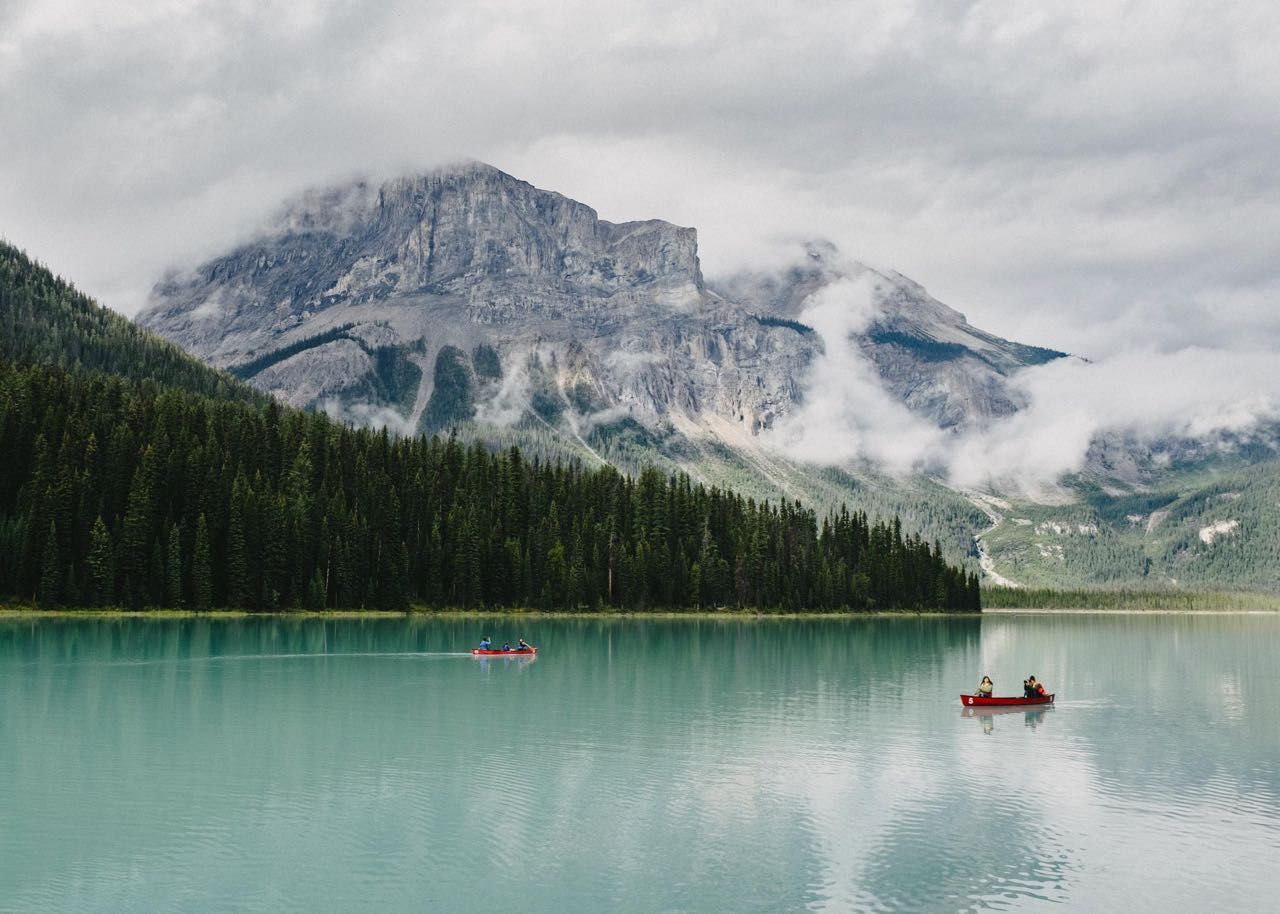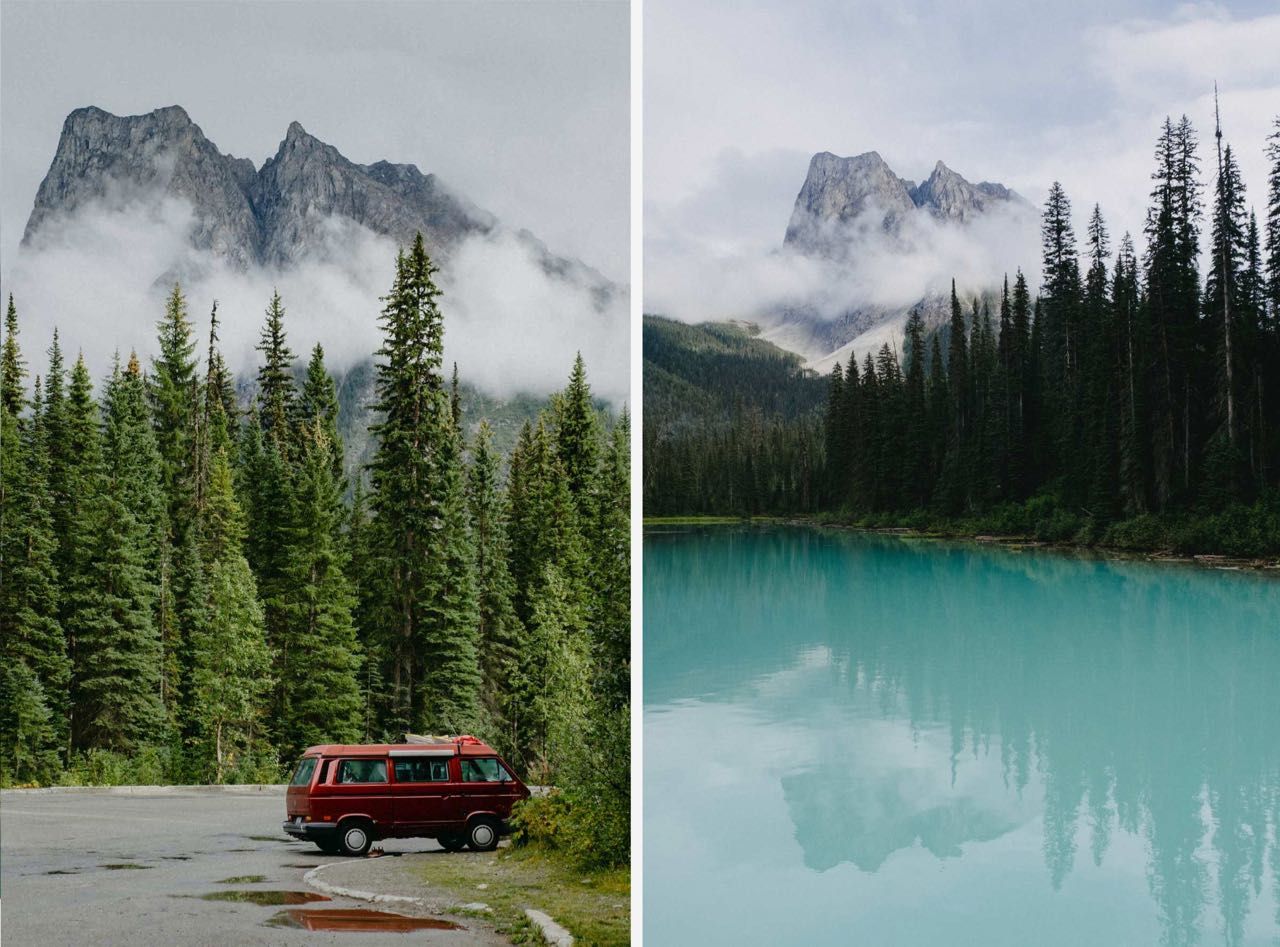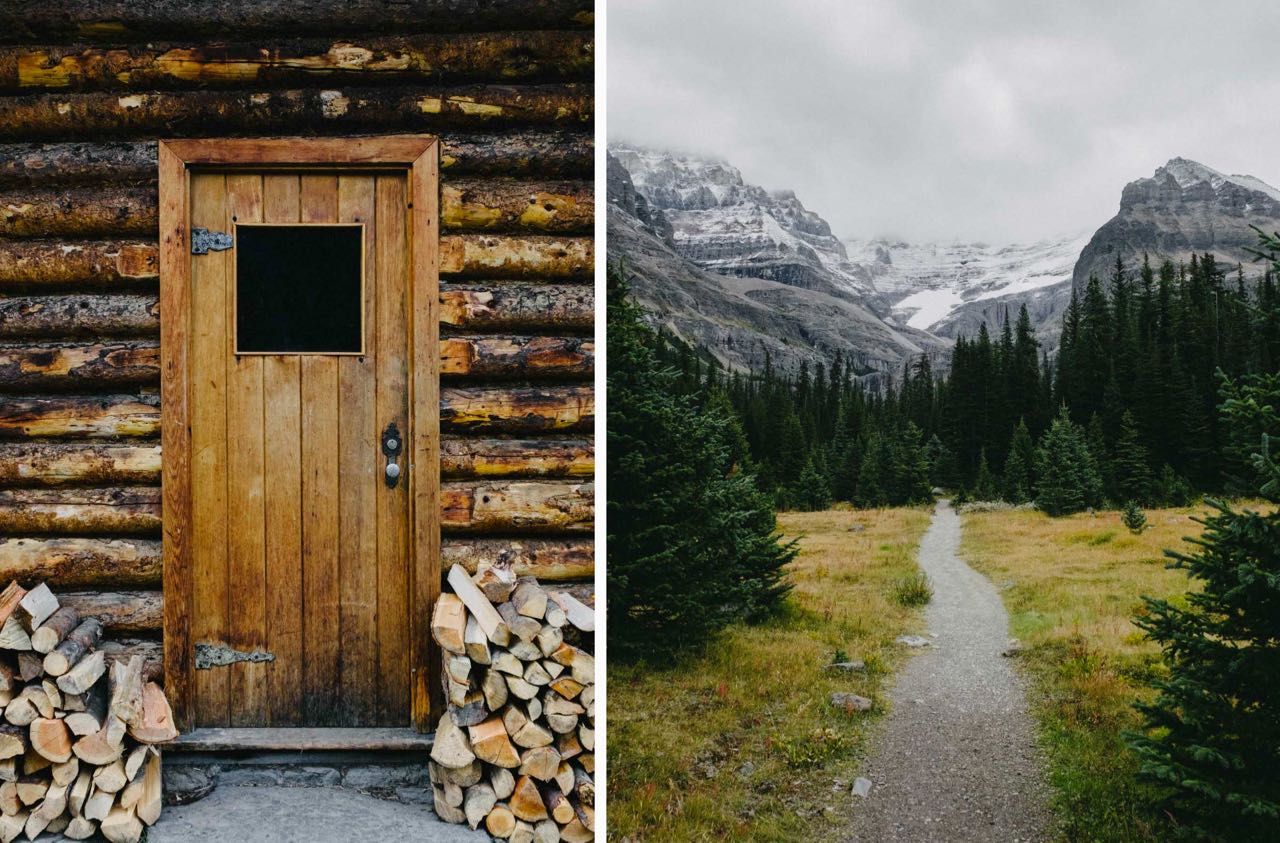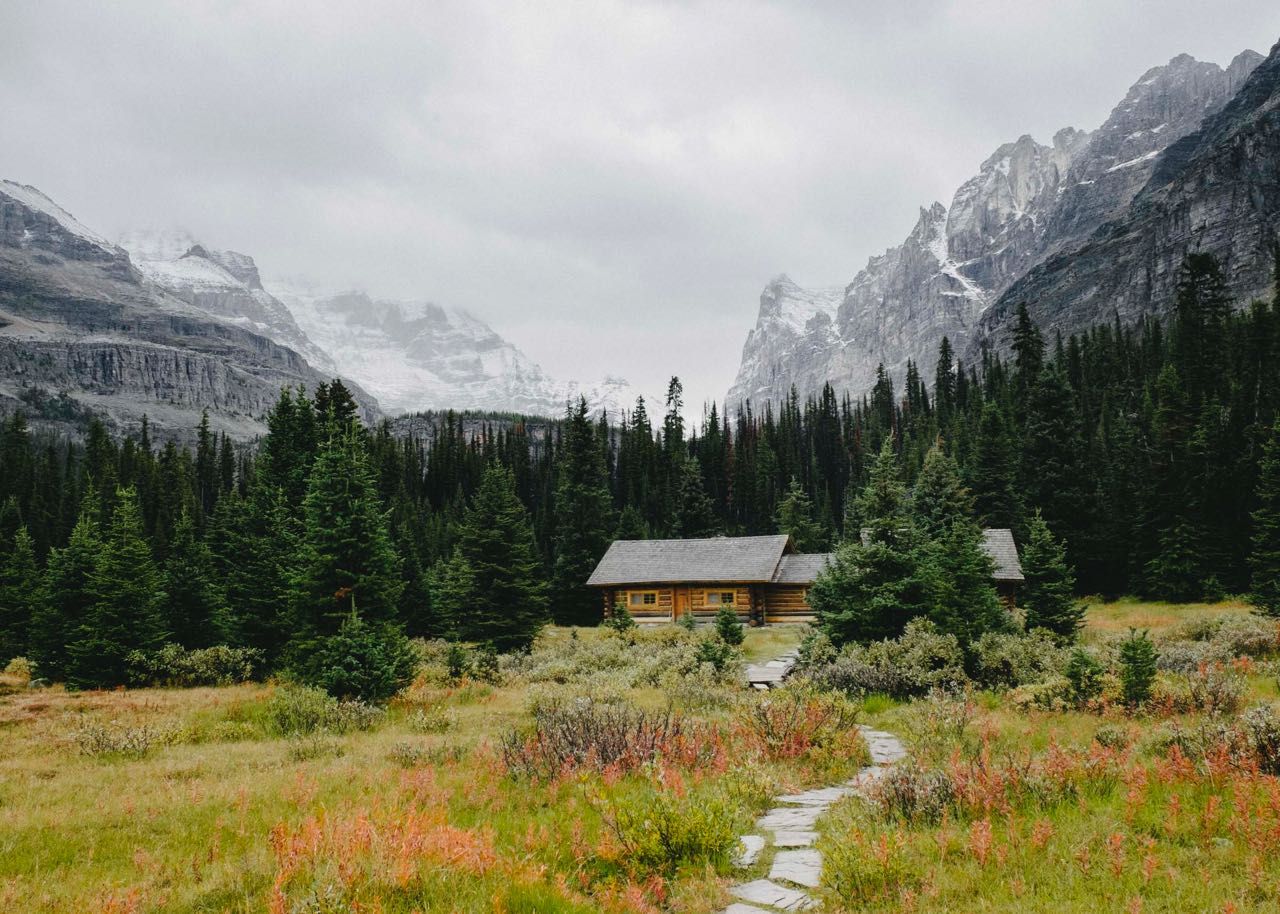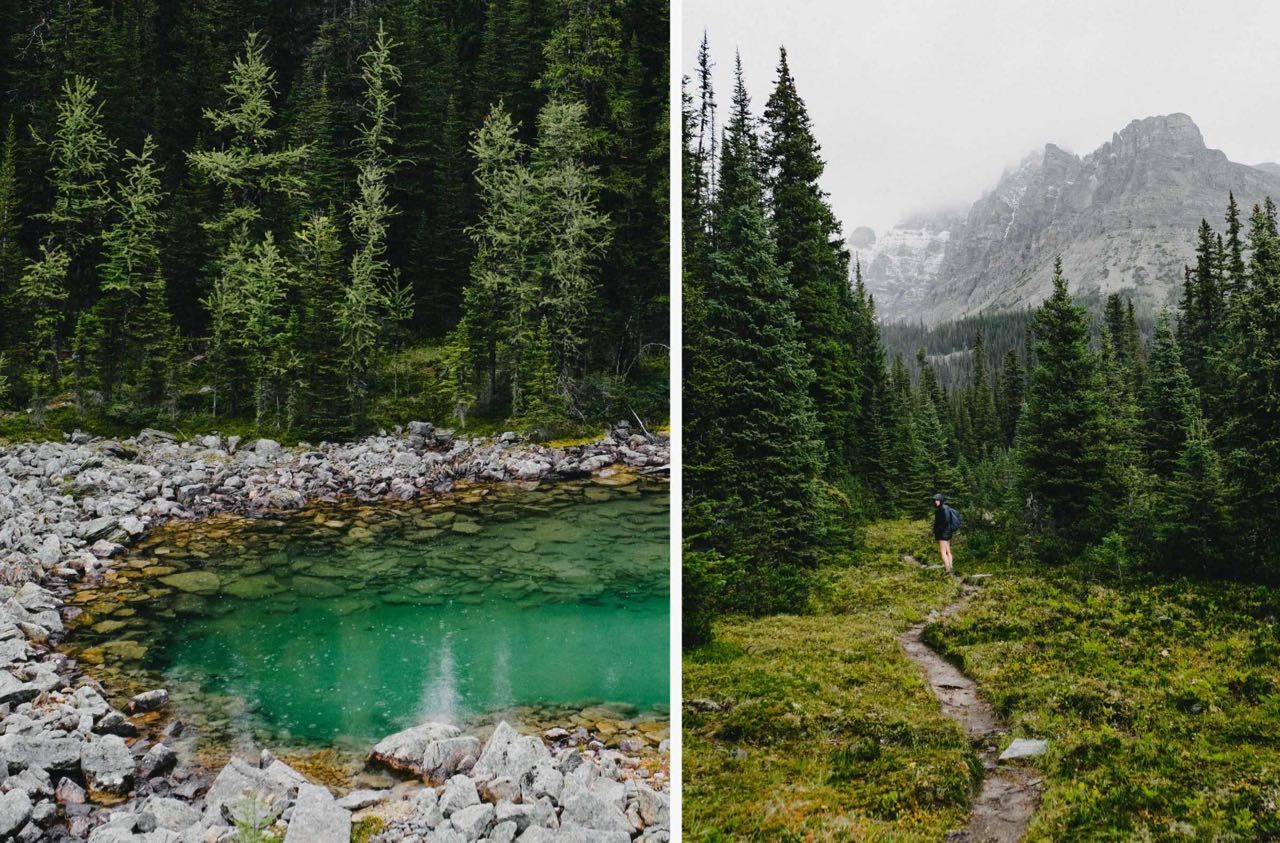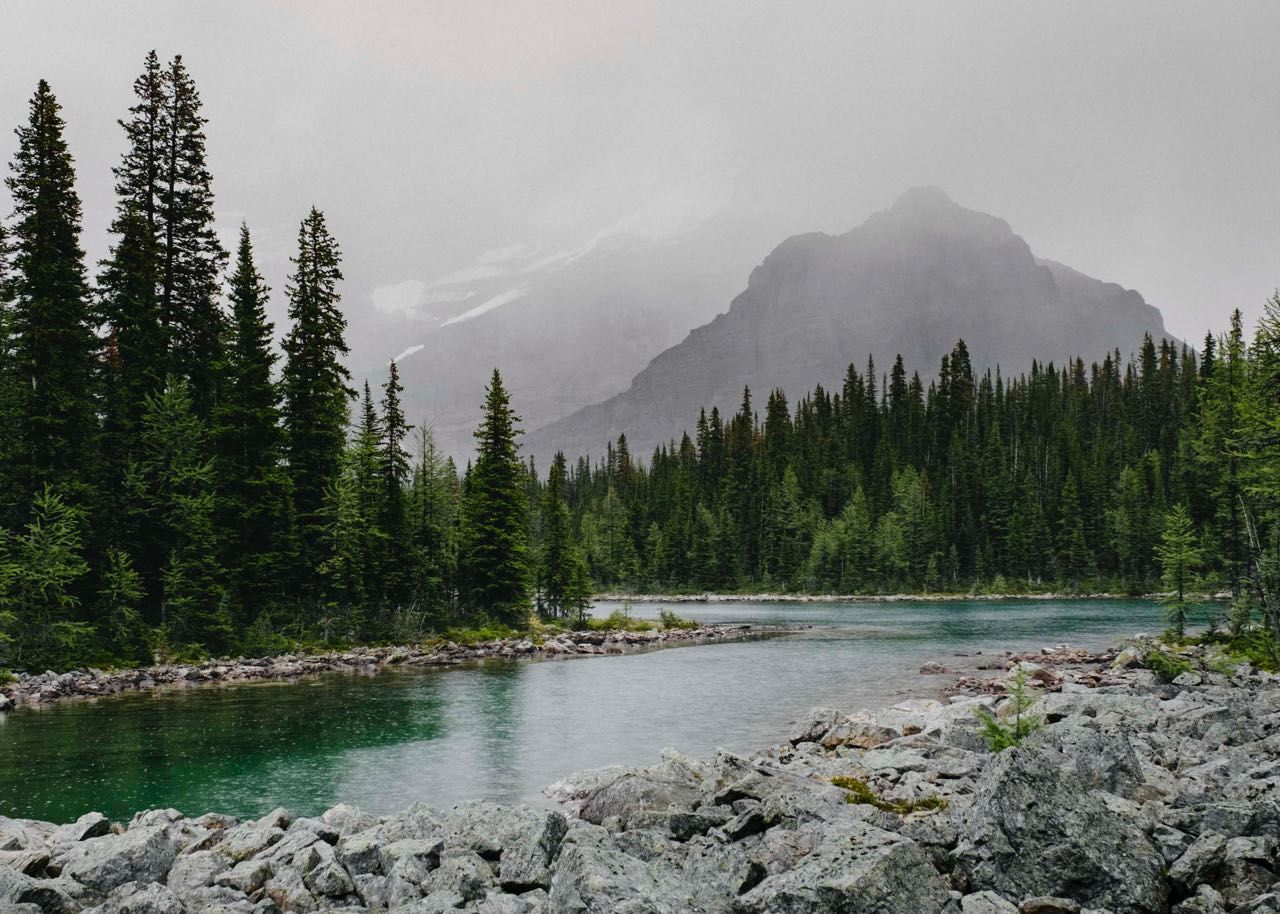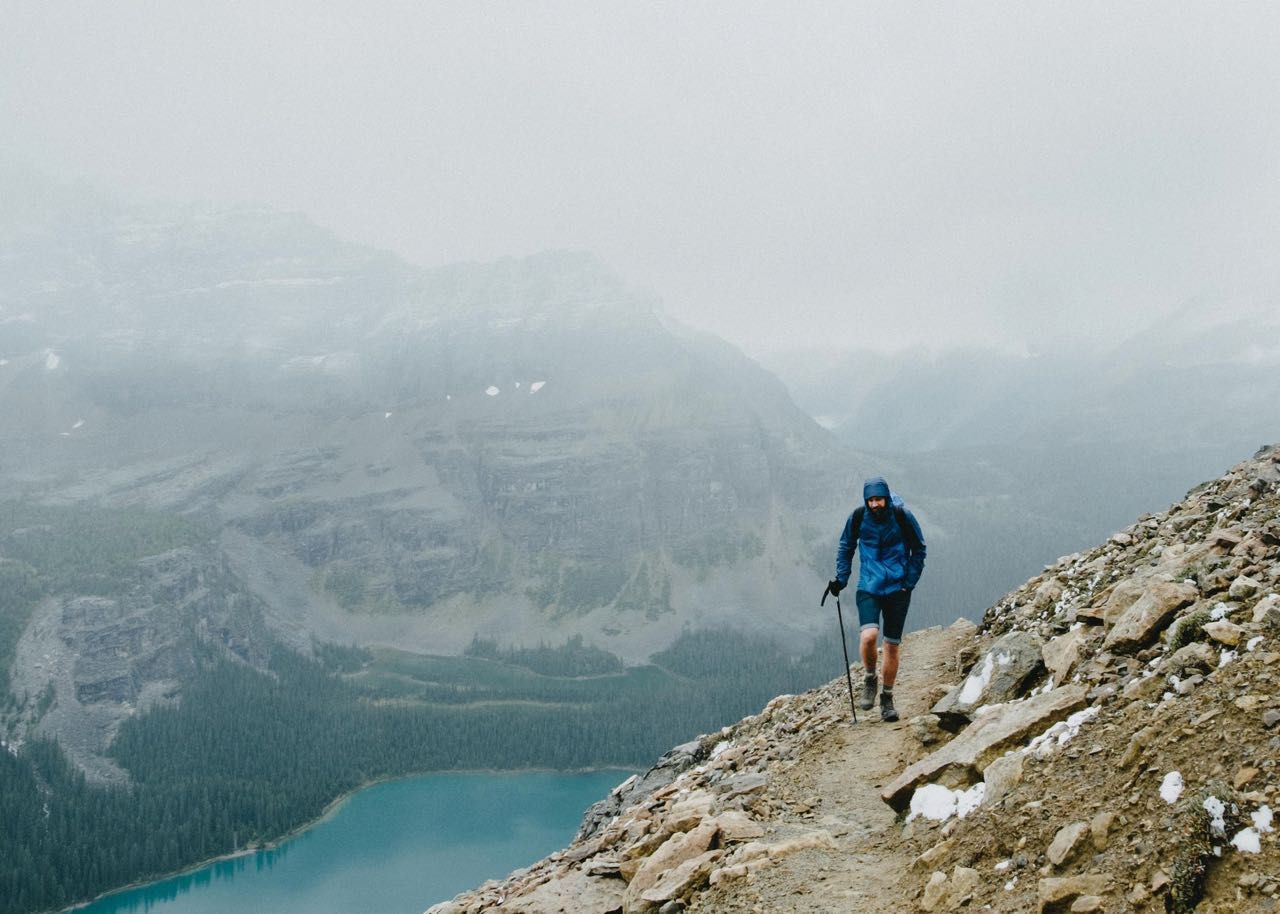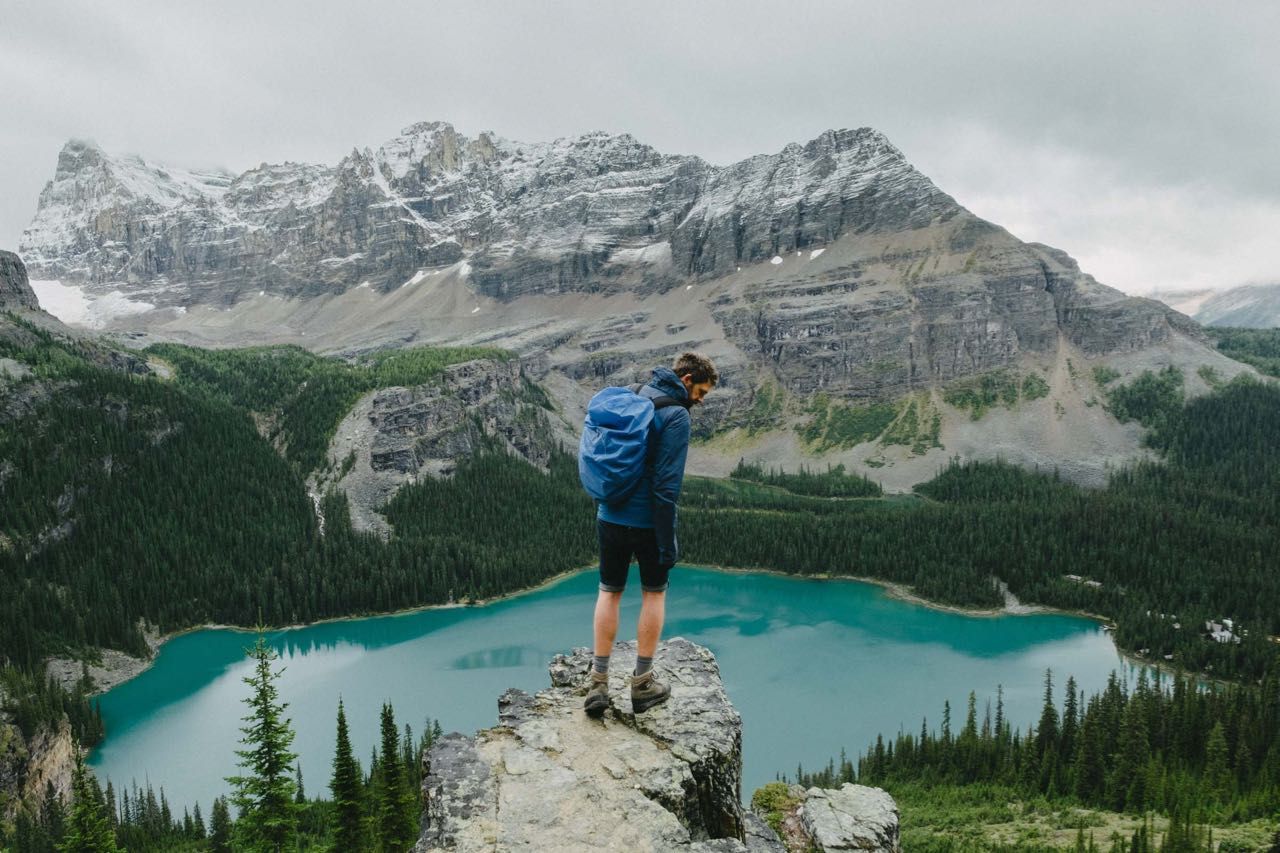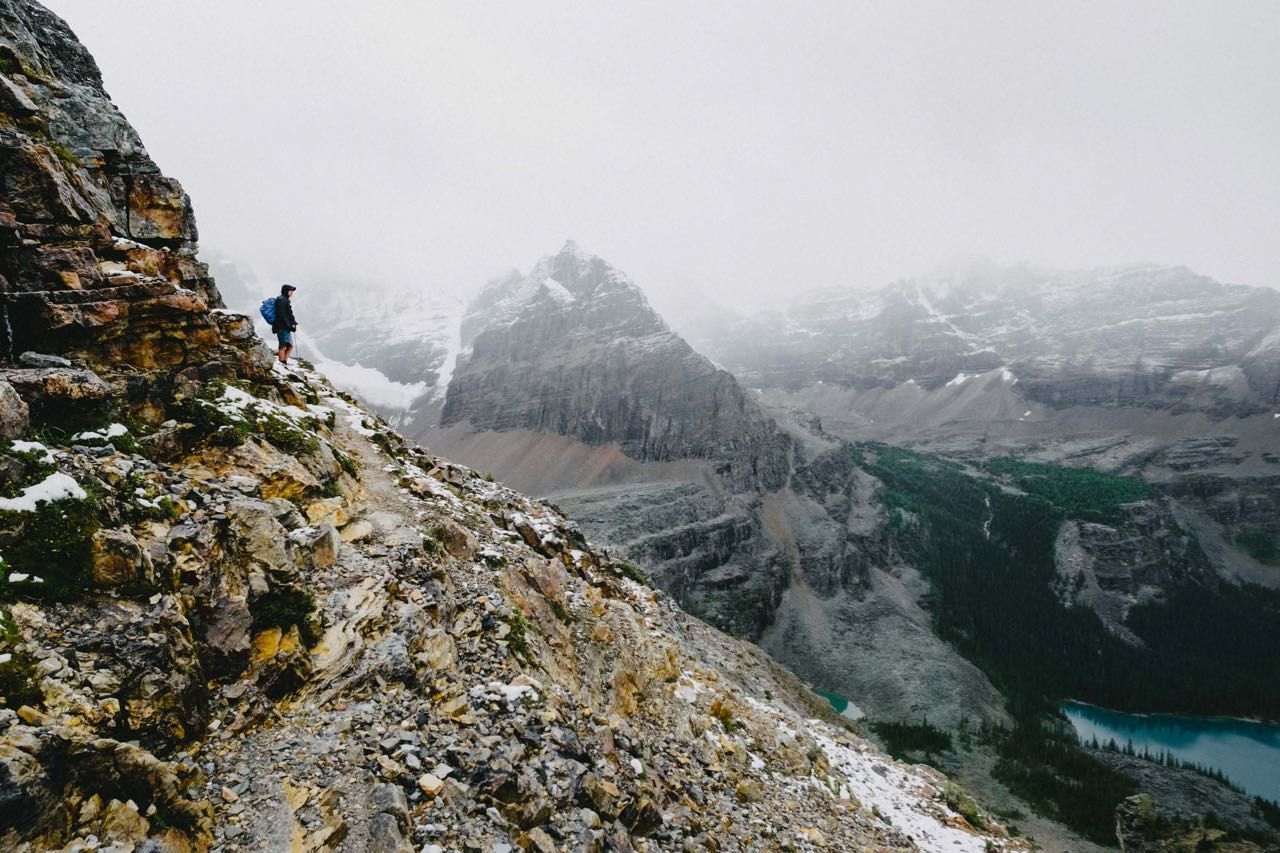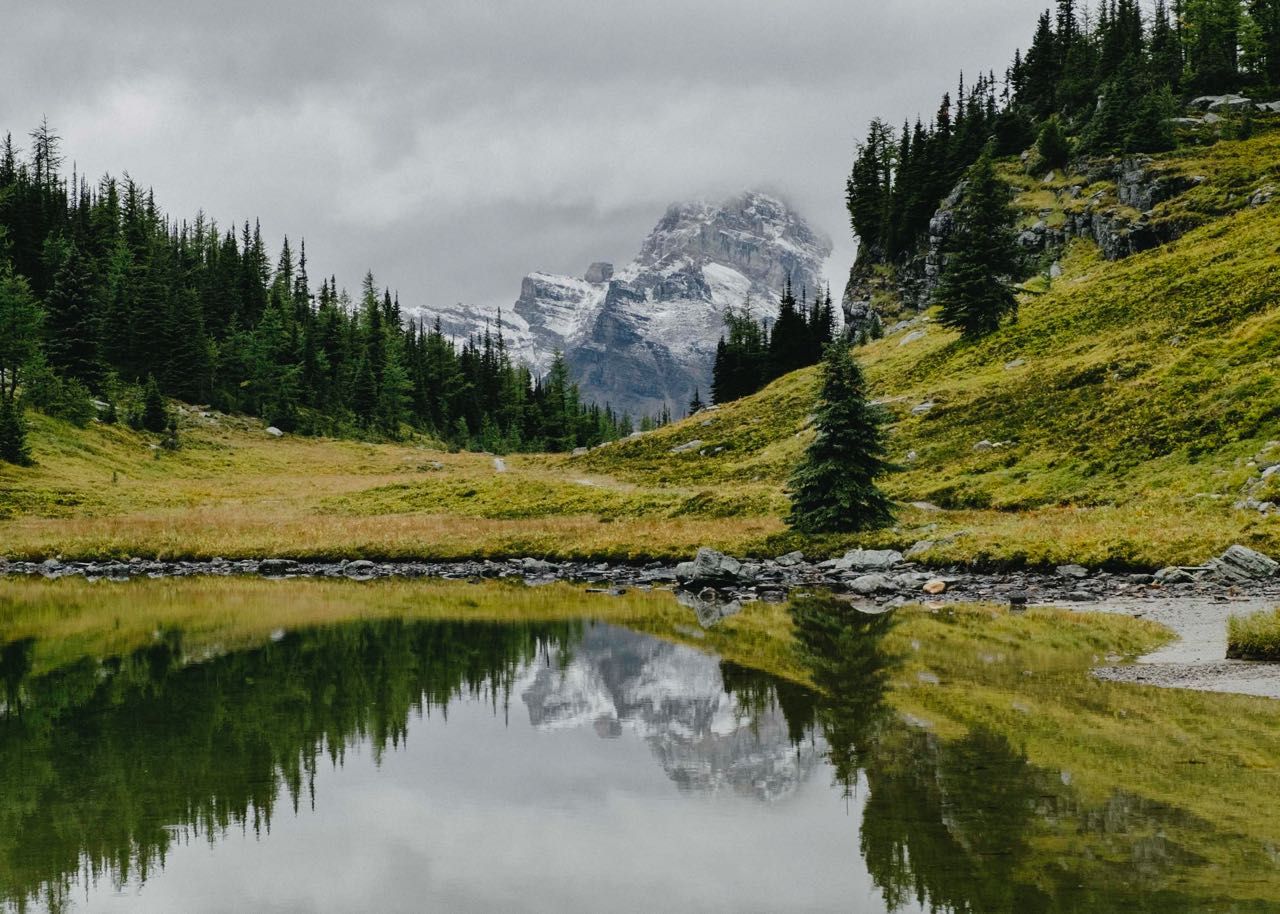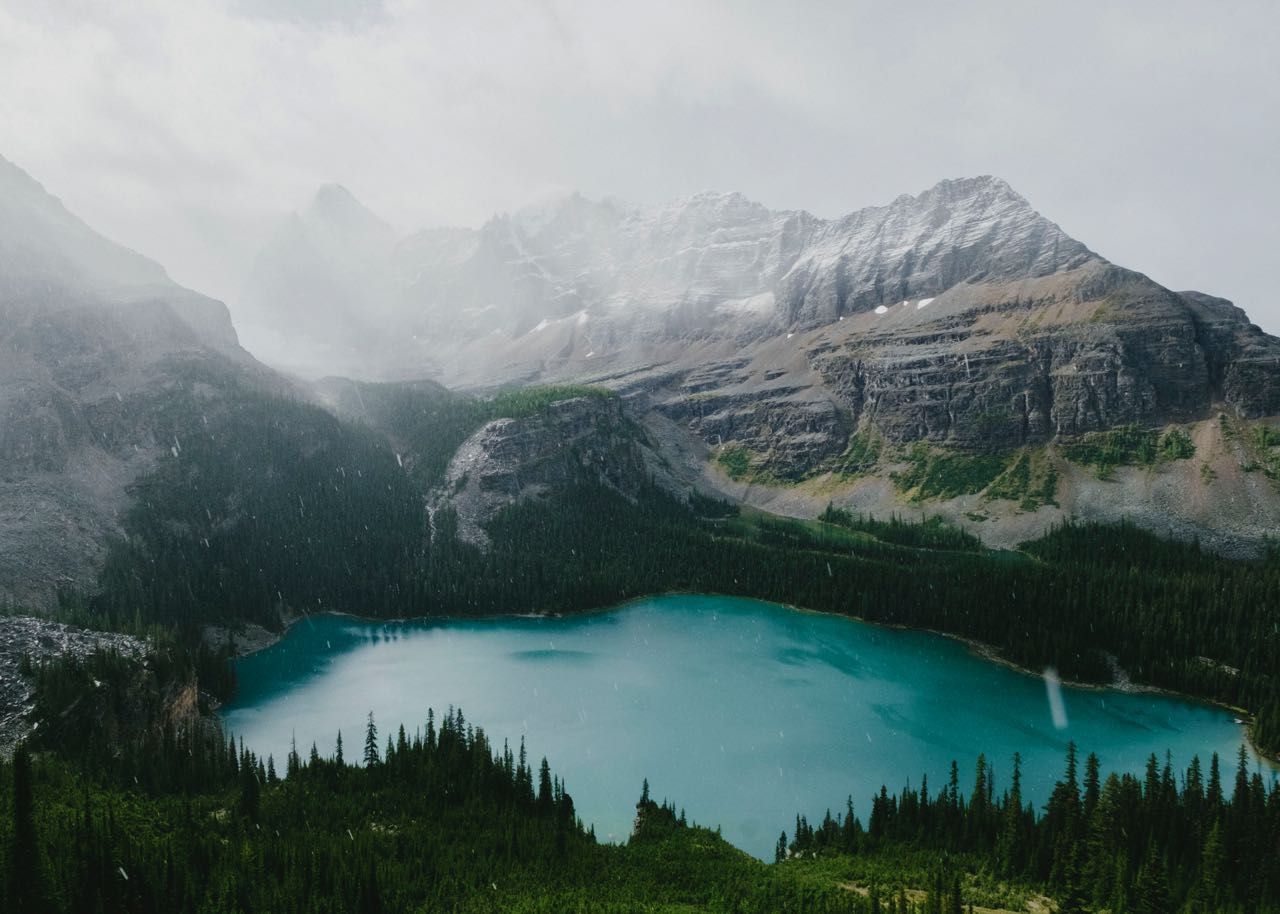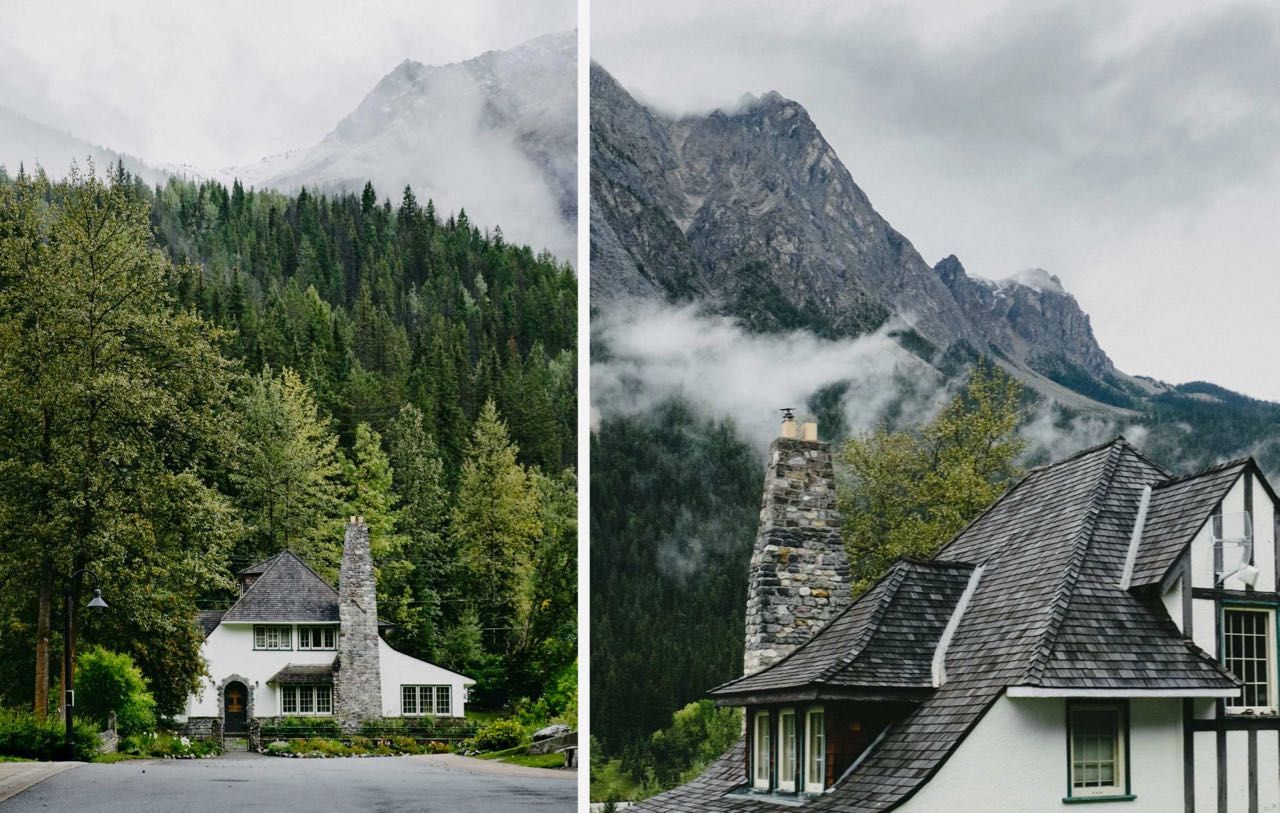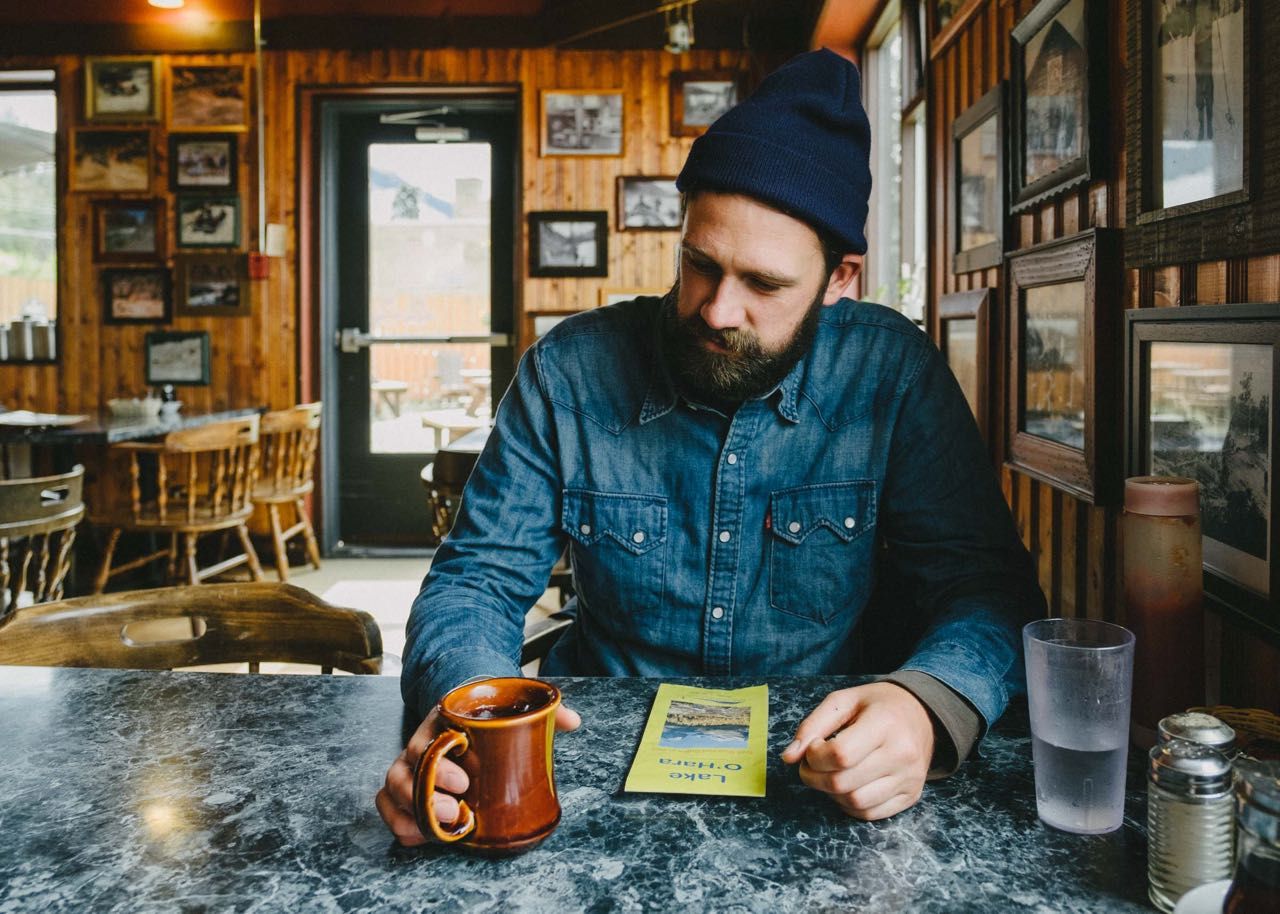LAST SUMMER WE FOUND ourselves with a week to kill in Kelowna, British Columbia. We drove out to see the tunnels and trestles of Myra Canyon, camped out on a quiet backcountry lake listening to lonely loon calls, then went to the White Lake Basin and had a frighteningly close encounter with a rattlesnake hiding out under a sage bush. And then we were like: Huh. Maybe we should go to the mountains. I mean, yeah, we had packed for two days of hot dry desert Okanagan weather… but it was summer everywhere, right? What could go wrong?
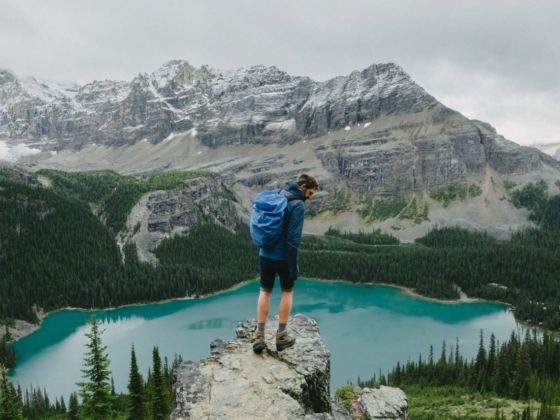
Canada's Lake O'Hara Is as Beautiful as It Is Inaccessible
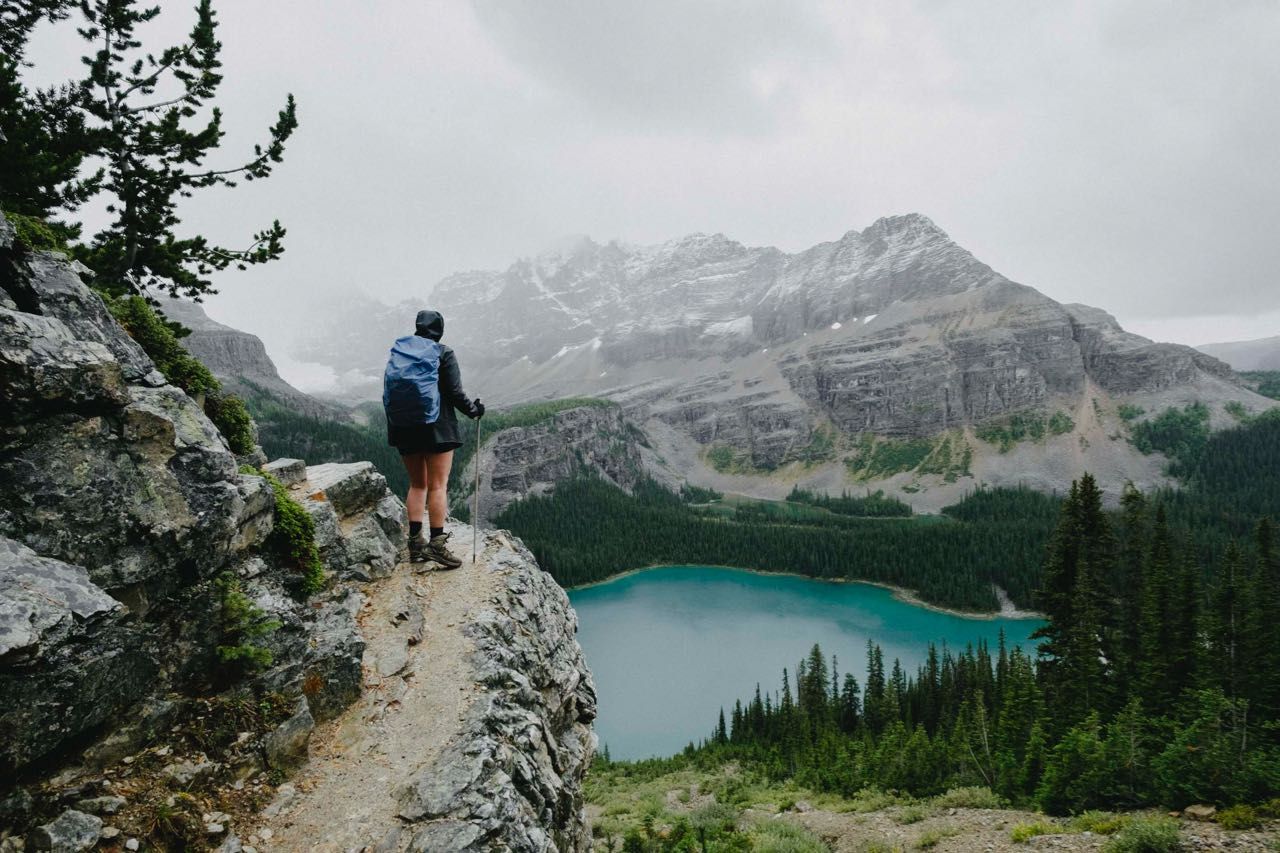
All photos by the author.
We ran to the store, bought some snacks and clean underwear, and hit the road east to Yoho.
Lake O’Hara
Lake O’Hara is generally regarded as the crown jewel of the Rockies. On the BC side of the Great Continental Divide, there are hanging valleys, glaciers, pristine blue lakes, verdant alpine meadows, waterfalls, and picturesque cabins… all surrounded by soaring rock amphitheatres and craggy peaks. With scenic trails small and large, it’s a hiker’s paradise and a stunning summation of what you can expect to find in Western Canada’s world-renowned mountain parks.
Like any beautiful place, its popularity boomed and at one time there were so many visitors that the fragile alpine meadows were trampled down to bare dirt and mud, and much of the area was on the verge of ecosystem collapse. To help preserve the valley and maintain the wilderness experience, Parks Canada clamped down and issued daily quotas, closing the road to traffic and laboriously shuttling people in. And it’s been working too — on any given day there are only about 225 people at Lake O’Hara, a tiny fraction of the crowds that nearby Lake Louise and Moraine Lake see, and the once-trampled meadows are growing grasses and heather and alpine flowers again. But even with the quota it remains essential that all visitors heed warnings and stay out of protected areas and on the trails to help preserve the area and wildlife for generations to come.
But a quota system obviously comes with a price, too, and Lake O’Hara is notoriously difficult to access. You have to book months in advance if you want to catch a shuttle in or camp, and stand-bys will arrive hours in advance hoping for a cancellation. But if you’re unable to book a spot on the bus don’t worry — there isn’t yet a quota for people who opt to hike in. It’s a dreary 11km walk up a dirt road and you won’t be able to spend the night, but even so it’s well worth your time and effort. Just start early to make the most of it, and make sure to catch a bus on your way out.
We had no idea how unusual it was to roll up without reservations and get into Lake O’Hara the same day — how lucky we were. Our general level of off-the-cuff poor planning also meant we had failed to even look at a weather report. We didn’t know there was a massive wet front moving in, that temperatures would continue to drop. We didn’t know that the forecast had caused the slew of cancellations, or that we would soon be wishing we had packed some sweaters and pants. You learn as you go.
Morning Glory & The Lakeshore Trail
The first trail on our agenda was the Morning Glory/Linda Lake circuit. A modest hike without much elevation gain, the trail leads about 3km west through the forest to a series of blue lakes and a nice mountain view of Mt Victoria, Huber, and Cathedral. From Linda Lake you can continue on to the Cathedral Prospect or loop back to the campground. Most of the surrounding peaks were shrouded in clouds during our visit, but it’s a very pretty hike. The amount of time spent in the forest, however, probably makes it among the least rewarding of the Lake O’Hara trails (but also the quietest, which was nice).
After dinner we went out on the Lakeshore Trail, a gentle 3km walk around Lake O’Hara. It’s a great sampling of the splendour of the area, and many of the other trails are accessed from this one. You’ll get nice views of the surrounding mountains and pass the Seven Veil Falls. A quick and easy hike, it’s a perfect way to fill up some time as you wait for your bus or, as we did, after dinner.
The Alpine Circuit
One of the mains draws to Lake O’Hara is the Alpine Circuit. Touted as the most scenic day hike in the Rockies, you trek a large circle high above the valley, climbing up to ridges, scrambling on ledges, dipping into hanging valleys, and getting views of all the peacock hues of greens and turquoise blues of the many lakes dotting the area. You get a great aerial perspective of O’Hara, peek into the neighbouring valleys at Wiwaxy Gap, pass beautiful Lake Oesa, and explore the Opabin Plateau. There are connecting trails throughout the circuit, so you can cut it short and bypass some of the trickier sections if you want. It is a much more challenging hike than the others, but it’s also the most rewarding.
We barely slept the night before, as temperatures dropped and we lay awake cold and damp and shivering. There was a brief moment of morning promise when we woke up to a glimpse of Mt Cathedral, its dusting of fresh snow shining through a gap in the clouds. But before long the rain clouds moved back in. As we ascended towards Wiwaxy Gap the rain turned to stinging ice, then thin driving snow. We were worried about slipping on the snow on the Huber Ledges, but they were much easier than they looked from afar, and the snow wasn’t piling up. It was the cold wind and stinging snow on Wiwaxy Gap that cut us the worst. We hadn’t packed for bad weather. Megan’s bare legs were turning purple and bright orange, so I took off one of my shirts to wrap around her waist and protect her legs from the wind.
Descending to Lake Oesa the wind subsided, and the snow turned to rain once more. Out of the biting wind, some meagre warmth slowly returned to our limbs, and we were able to slow down and enjoy it a bit more. And seriously, it is a beautiful hike regardless of the weather. One of the prettiest I’ve ever been on. 10/10 would recommend.
(…except maybe pack a just-in-case ziploc bag for your iPhone because mine got so soaked it would never turn on again)
We wanted to hike the entire Alpine Circuit. We really did. But we had packed for hot and dry Okanagan weather, and here we were underdressed and soaked by freezing mountain rain. We were sorely unprepared, and going was made slow with ample stops for photos (no regrets). Our shuttle was leaving early that evening, and we reluctantly decided we better not risk it. We cut the route short at the Opabin Plateau, descending towards Mary Lake. But even this shortcut was beautiful almost beyond our reckoning.
Soaked and exhausted we made it back to camp, packed up our things, made a quick cup of hot chocolate, and caught the shuttle back to the car. It took a while to warm up, but we did (with a little help from some nice hot grub and coffee at the Big Bend Cafe in Golden).
We learned a valuable lesson on this trip. The weather was bad, sure. We were underprepared, yes. But if we had done our research or inquired ahead of time we might have been discouraged and not bothered. The cold wet weather made it a trying and at times unpleasant experience, but it was only because of the bad weather that we were able to go at all. It just goes to show: sometimes poor planning is the best plan of all ¯\_(ツ)_/¯.

